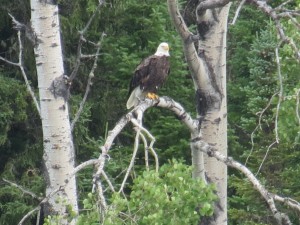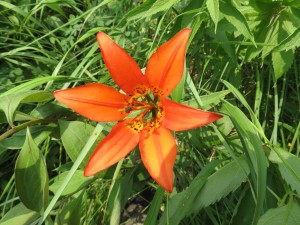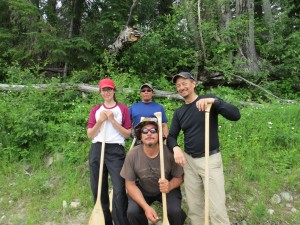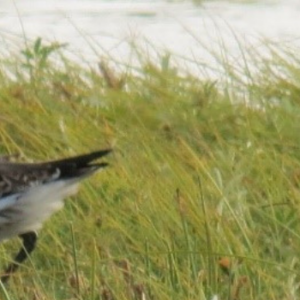North French River Biodiversity Expedition the final chapter (Part 3)
It started on one of many portages around a rapid with a waterfall at the end. The granites from the shield rippled like bulging muscles, through which the river cut its route, sliding and tumbling over the shield rocks towards the sea. Fractures in the pink, grey and whitish rock were filled with other colours of rock, some jet black, some shining with quartz crystals, some showing oxidation. Bernie noticed it first; a small drill hole, about three centimeters wide and several deep. Someone had been here, and removed a core of rock with a powerful drill. As it turned out, this was not the only evidence of mineral sampling that we found. Several more core sample holes were discovered during portages, a clear sign of interest from mining companies in the rocks that underlie the North French River watershed.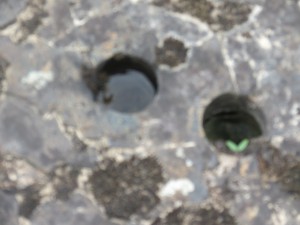
While mining is a widespread in northern Ontario, it would not be welcome in this pristine watershed that the Moose Cree (with Nature Canada’s support) wish to protect. The evidence of mining companies slipping into the remote river sections to grab samples of rock for mineral content analysis was both troubling but also motivating to double efforts to protect this amazing river system.
Leaving the shield into the James Bay lowlands for the last leg of our journey meant subtle but distinct changes in habitats and scenery and bird populations. The river broadened. There were extensive stands of poplar and an absence of the stunning rocky outcrops that also brought apprehension of more portages or difficult lines. It took us two full days to paddle the last 90 kilometres of the river. The high water level was a boon as it covered rock gardens that in mid-summer should have made advancing more difficult. Occasionally it felt like we were on an angled conveyor belt, moving along at a good 10 kilometres per hour clip. I was especially happy by the speed of the river and lack of need to hop out of the canoe to line or drag it through the forest as I was fighting an infection in my leg that was getting the upper hand.
Bald Eagle, Osprey, and Sandhill Cranes were some of the larger species that we observed on these lower stretches of the North French. New species included Least Flycatcher, Red-eyed Vireo (on the shield the vireos were Philadelphia and Blue-headed), Song Sparrow and Yellow Warbler. A preliminary analysis indicated that we observed 82 species of birds over the 12 days of travel. The only people that we encountered were a local family fishing on the last day not far from the confluence of the North French and the Moose River.
I end this account with a few more images from our trip that will serve as a reminder of what we want to protect.
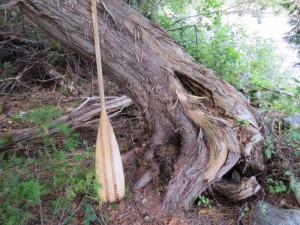
White Cedar Tree



